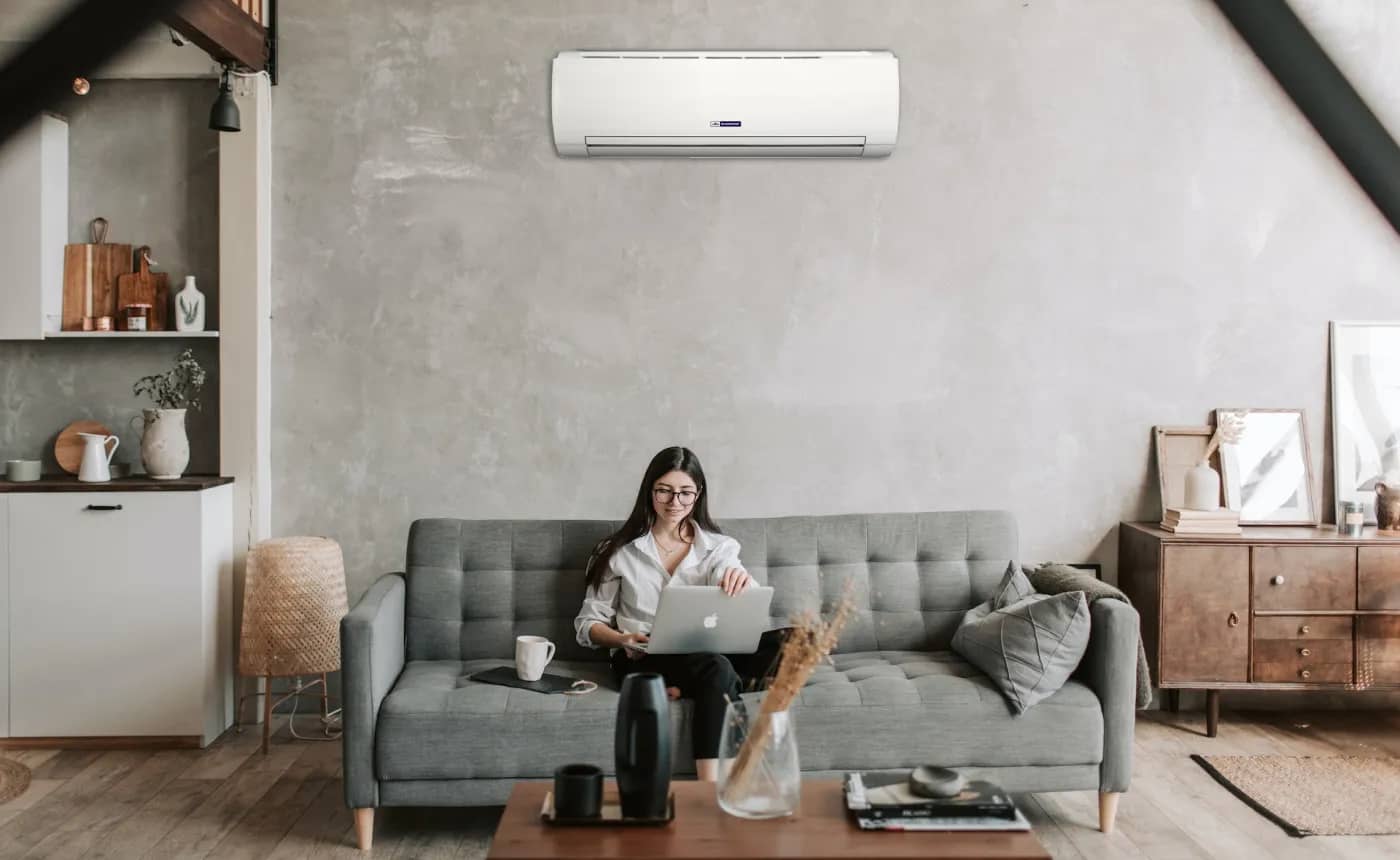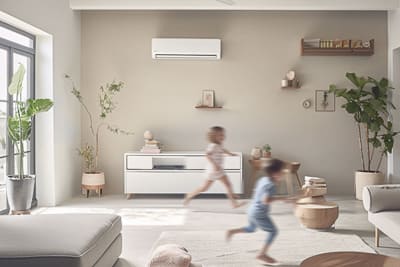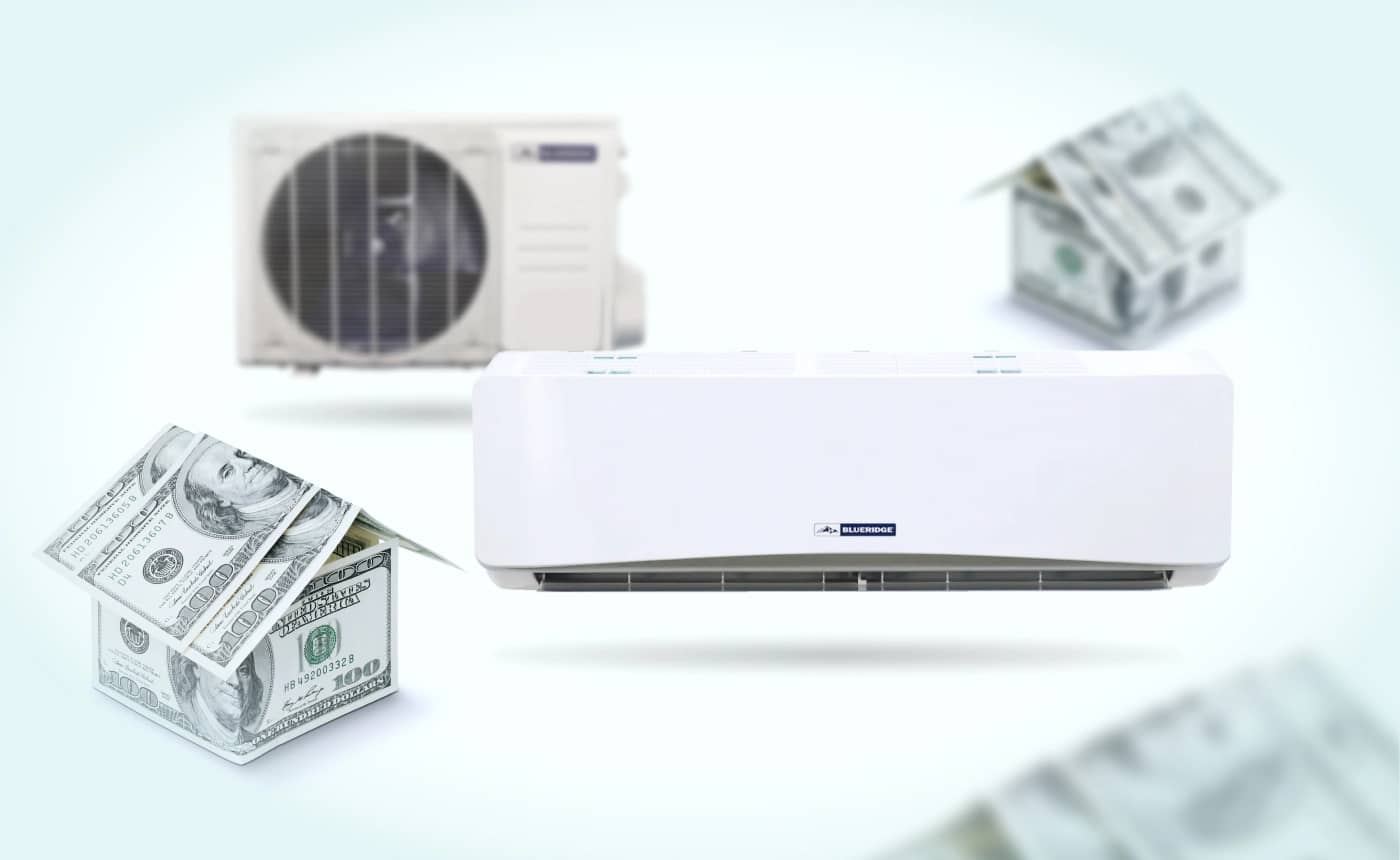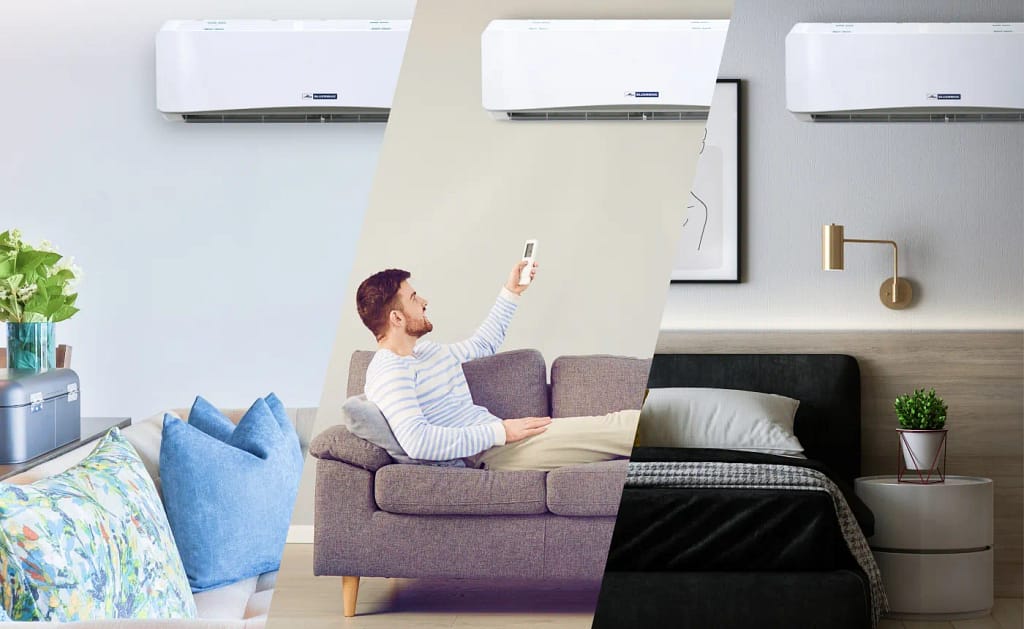
It’s a struggle we are all too familiar with.
One person in your home has lowered the temperature because the stove is making it too hot to work in the kitchen. Meanwhile, someone studying in the office and another watching TV in the living room are growing uncomfortably cold.
What is a fair compromise?
With a three-zone ductless mini-split system, you don’t have to compromise!
KEY TAKEAWAYS
- Three-zone mini-split systems offer superior comfort, energy efficiency, and customized temperature control for multiple rooms in a home or business.
- Installation is fast and cost-effective, with long-term value from energy savings & reduced installation costs.
- These systems heat and cool, providing comfort all year long.
Understanding Three-Zone Mini-Split Systems
Imagine controlling and customizing the temperature of three distinct areas in your home or business using a single, energy-efficient system.
That’s precisely what a three-zone mini-split system can do for you.
A ductless mini-split AC system comprises an outdoor unit and three indoor units (air handlers), providing efficient and customizable temperature control for multiple rooms or zones throughout your space.

Designed to deliver targeted heating and cooling, a three-zone mini-split system offers unparalleled flexibility for homeowners.
Rather than relying on a single thermostat to regulate temperatures throughout an entire home, a three-zone mini-split allows users to set individual temperatures for three separate rooms or areas. This means that each room or zone can cater to the personal comfort preferences of its occupants.
But what exactly constitutes a three-zone mini-split system, and how does it operate differently than a traditional HVAC system?
Let’s unlock the components and functionality of these sophisticated systems for a better understanding of how they work, what benefits they bring, and whether they will be the right type of HVAC system for you.
Components of a Three-Zone System
A three-zone mini-split system comprises an outdoor unit and three indoor units.
The outdoor unit is the primary component responsible for supplying power and cooling/heating to the indoor units, making it suitable for larger residences with two or more bedrooms.
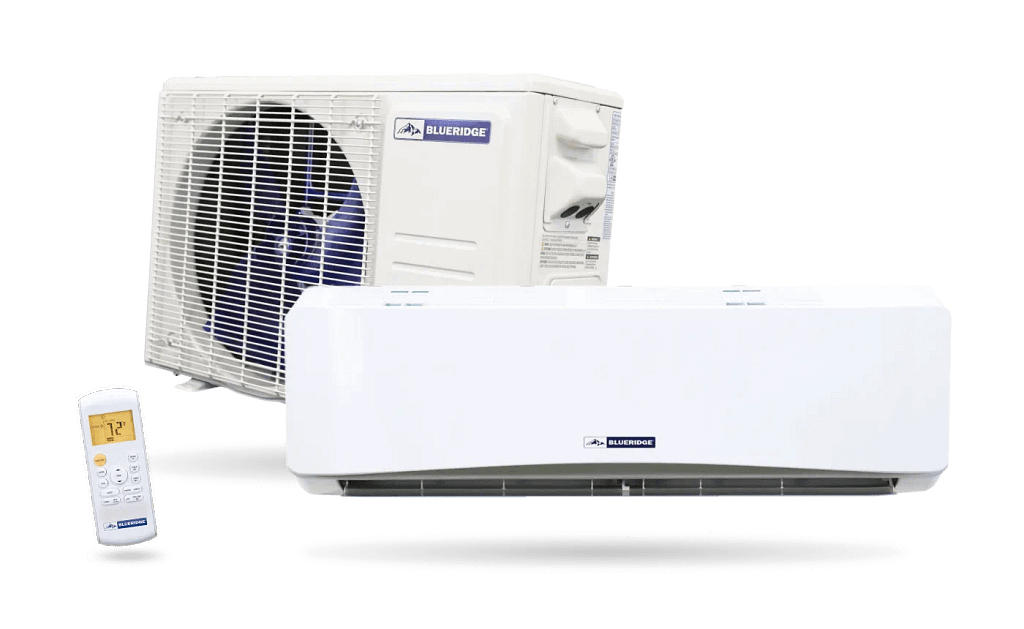
As for the indoor units, you have various options, including high-wall mount, low-wall mount, ceiling cassette, and more.
Choosing an air handler type can depend on room configuration, installation logistics, aesthetic preferences, and budget. Each area of a three-zone system can have a different air handler type if desired.
These options will ensure a perfect fit for your specific needs, square footage, and room sizes. No matter the indoor unit type, each is designed to provide customized temperature control in its designated zone, making three-zone systems ideal for three-bedroom homes.
How a Three-Zone Mini-Split Operates
At the heart of a three-zone system’s operation is its ability to provide personalized temperature regulation in various parts of a building and energy conservation.

The indoor air handler is mounted directly in the room that requires heating or cooling, ensuring precise temperature control.
Three-zone systems, a type of multi-zone system, achieve this level of customization by utilizing refrigerant lines to distribute heating or cooling to each zone.
This approach allows you to maintain different temperatures in different areas of your home or business, providing the ultimate comfort and control.

Advantages of a Three-Zone Ductless Mini-Split
The three-zone ductless mini-split has many advantages. From its ability to create customized comfort zones to its versatility in design, a three-zone system is a favorite among individuals who need a good amount of heating or cooling options but also want a ton of flexibility and low-cost maintenance.
Let’s look at each of these advantages a bit more closely:

1. Energy Efficiency
One of the most significant advantages of three-zone ductless mini-splits is their energy efficiency.
These systems generally have higher SEER ratings than central AC units and heat pumps, making them more energy-efficient options for your home or business.
This energy efficiency means saving money on your energy bills while enjoying the comfort of a well-regulated indoor environment.

2. Customized Temperature Control
Three-zone systems enable individualized temperature control in distinct rooms, providing personalization where traditional HVAC systems fall short.
This capability allows you to maintain the ideal temperature in each room of your home or business without wasting energy on unoccupied spaces.
A three-zone system saves you money on energy costs while still enjoying independent temperature control in multiple zones or rooms.

3. Versatility for Different Room Sizes
Three-zone ductless mini-splits offer great versatility for different room sizes.
They enable temperature zoning, allowing for the division of your house into distinct segments or comfort areas. One outdoor unit can connect up to five air handlers, providing simultaneous multi-room cooling or heating throughout the house. Concealed duct air handlers can extend coverage by connecting to additional rooms with flexible ducting.
This flexibility allows the user to set different temperatures in separate zones, giving complete control over each area and personalizing the space to suit your needs.

4. Improved Indoor Air Quality
Indoor air quality plays a critical role in our overall well-being, yet we sometimes overlook this aspect of home comfort.
With the increased emphasis on energy-efficient homes, builders seal houses more tightly than ever. While this is excellent for conserving energy, it can sometimes result in a buildup of indoor pollutants if proper ventilation and filtration are not in place. This is where mini-splits can provide an added advantage.

5. All-Season Comfort
Three-zone mini-split systems with heat pump technology are widely available. Heat pumps transfer heat, unlike traditional heating methods, which generate heat using fossil fuels.
During warmer months, mini-splits extract heat from inside the home and transfer it outdoors, effectively cooling the indoor space. Conversely, in colder months, they remove heat from the outdoor air (even in surprisingly cold temperatures) and transfer it indoors to warm the space.
This dual capability of heat extraction and addition means a three-zone mini-split system can function as an air conditioner and a heater. (Note that a multi-zone system cannot heat and cool simultaneously; the heat pump operates in one mode at a time.)
While all powered-on air handlers must run in either heating or cooling mode at a given time, each unit can have its own set point. Turn individual units on or off for further customization according to each person’s desires and each room’s needs.
This flexibility ensures that every corner of the home remains at the desired temperature, regardless of the season.

6. Individualized Comfort
At the heart of modern living is the pursuit of personalization–shaping our environments to suit our unique preferences and needs.
Mini-splits allow us to control the temperature in various parts of the house, fulfilling individualized comfort requirements.
The three-zone mini-split system epitomizes this individualized approach, presenting homeowners with an advanced solution for tailored climate control.
For instance, someone working in a home office might prefer a cooler setting to remain alert, while a toddler’s room might require a warmer, cozier temperature for naptime.
Meanwhile, a kitchen, often warmer due to cooking, might need only minimal heating during winter but more intensive cooling during summer.
A three-zone system addresses all these varying needs simultaneously, ensuring every family member feels comfortable in their respective spaces.

7. Quiet Operation
In the realm of home comfort, there’s a growing appreciation for intangible aspects of comfort, like the ambiance of a space.
The noise level, often overlooked, plays a crucial role in shaping the overall experience and mood within a home. One of the standout features of mini-splits are their remarkably quiet operation, ensuring that comfort is felt but not heard.
Unlike traditional HVAC systems, which sometimes create considerable noise during operation, mini-split systems have near-silent performance.
A few factors contribute to this:
- Advanced Technology: Modern mini-splits have state-of-the-art components, such as inverter compressors that adjust their speed based on the system’s requirements. This eliminates the abrupt starts and stops, common noise culprits in traditional systems.
- Separate Indoor and Outdoor Units: The noisiest part of any air conditioning or heating system is usually the compressor within the condenser or heat pump, which is located outside. By isolating these components outside the home, much of the operational noise is not an issue.
- Optimized Fan Design: The fans within the mini-split indoor units move air efficiently with minimal noise. Combined with quiet motors, the blade design ensures that air movement is smooth and barely audible.

8. Versatile Installation Options
One of the striking attributes of mini-split systems, often overshadowed by their energy efficiency and climate control capabilities, is their adaptability in terms of installation.
Traditional HVAC systems demand significant infrastructural adjustments and space. In contrast, mini-split systems offer homeowners a spectrum of installation possibilities. This flexibility is a game-changer, especially in homes and spaces with distinct architectural challenges.
Indoor units come in a variety of styles to choose from:
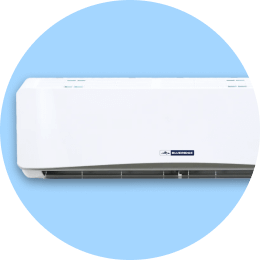
High-Wall Units: The most common type of mini-split air handler, high wall-mounted units are compact and can be placed high up on a wall, making them inconspicuous and ensuring optimal air distribution. Their elevated position also minimizes obstructions, promoting efficient airflow.

Ceiling Cassettes: Ideal for rooms with limited wall space or where a wall-mounted unit might be intrusive, ceiling cassettes recess within the ceiling for a flush look. This provides a discreet appearance and distributes air evenly from a central location.

Concealed Duct Units: For homeowners who desire a virtually invisible climate control solution, concealed duct units can provide conditioned air in multiple rooms while hidden within an attic, basement, or crawlspace. Only the vents are visible, maintaining the room’s aesthetic integrity.
Installation of Three-Zone Mini-Split Systems
The installation process for three-zone mini-split systems is relatively straightforward.
Ease of installation is a huge advantage of a three-zone mini-split over traditional central air conditioning systems. In fact, many homeowners choose to install their mini-split as a DIY project. Without the labor of extensive ductwork, you’ll experience quicker setup times and reduced overall costs.

This simplicity makes the installation faster and more cost-effective and minimizes disruption to your home or business.
Because of their straightforward design, many individuals install their mini-split systems themselves. However, a licensed electrician can ensure the safety and compliance of electrical wiring for your system.

Maintenance of Three-Zone Mini-Split Systems
Regular maintenance is essential to ensure the long-lasting performance of your three-zone mini-split system.

Schedule an annual inspection, cleaning, and tune-up with a professional HVAC technician to keep your system running smoothly.
In addition to professional maintenance, it’s important to routinely clean the air filters and wipe down the external surface of the unit with a damp cloth to prevent dust accumulation. By following these simple maintenance steps, you can extend the life of your system and enjoy consistent comfort in your home or business.
Some Commonly Asked Questions About Three-Zone Mini-Splits
Now, you have the overall idea of a three-zone mini-split system, but you may still have a few lingering questions. Here are some common ones that tend to come up fairly often:

Question #1: What is a three-zone mini-split system, and how does it differ from traditional HVAC systems?

A three-zone mini-split system consists of one outdoor unit and three indoor units. Unlike traditional HVAC systems that use ductwork to distribute conditioned air, mini-splits directly deliver air to individual rooms or zones, allowing for customized temperature control in each of those zones.

Question #2: How do I determine the appropriate number of BTU for each room in my three-zone system?

The number of BTU (British Thermal Units) needed depends on several factors including the size of the room, its insulation, the number of windows, and its sun exposure. As a general rule, larger rooms require more BTU.
For precise calculations, consult an HVAC specialist or use online BTU calculators, inputting room dimensions and other relevant data. Our experts can help determine the perfect system for you, from a single-zone to a dual-zone mini-split 110V or three-zone system.

Question #3: How energy-efficient is a three-zone mini-split system compared to traditional air conditioners?

Due to their advanced technology, the absence of ducts (ductwork often results in energy losses), and the ability to individually control the temperature in each zone, three-zone mini-splits are more energy-efficient than traditional centralized systems.
Each unit can be turned off when the room isn’t in use, further conserving energy.

Question #4: Can one outdoor unit adequately support all three indoor units?

Yes, a three-zone mini-split system is specifically designed so that one outdoor condenser unit supports the three indoor units. However, the outdoor unit’s capacity must be correctly sized to ensure optimal performance for all indoor units.

Question #5: Is it complicated to maintain a three-zone mini-split system?

Maintenance for a three-zone mini-split isn’t much different from other air conditioning systems. Regularly cleaning or replacing filters, checking for any obstructions, and ensuring no refrigerant leaks are crucial. For optimal performance and longevity, schedule an annual professional check-up.
Remember, while these answers provide a general overview, specifics can vary based on the brand and model of the mini-split, as well as individual installation circumstances.
Alpine: Your Best Source for All HVAC Needs
When you’re ready to move to a ductless three-zone mini-split system, reach out to Alpine Home Air Products for help.
For over 20 years, Alpine has provided top-notch HVAC solutions to homeowners and businesses alike.
With a track record of excellence and a commitment to customer satisfaction, our HVAC experts have consistently delivered high-quality products with the hearts of teachers, not tellers.
Whether you’re looking to upgrade your current system, need professional advice on choosing the right mini-split, or require reliable after-sales support, Alpine Home Air is your trusted partner in ensuring a comfortable indoor environment year-round.

